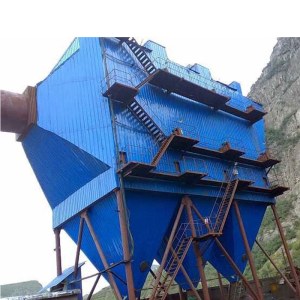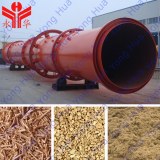An electrostatic precipitator dust collector is a device that uses an electric field to separate the solid or liquid contaminants present in the gas stream. The electrostatic dust removal/filter uses a high voltage electric field to ionize the flue gas, and the dust in the gas stream is charged and separated from the gas stream by the electric field.
Electrostatic Precipitator For Sale
Compared with other dust removal equipment, electrostatic dust precipitators consume less energy and have high dust removal efficiency, which is suitable for removing 0.01-50μm dust in flue gas, and ESP dust collector can be used for high flue gas temperature and pressure. Practice shows that the larger the amount of flue gas handled, the more economical the investment and operating cost of using electrostatic precipitator system. As one of the professional electrostatic precipitator companies/manufacturers, Senotay offers good-quality electrostatic precipitator for sale which can improve the efficiency of industrial electrostatic dust collection.
CDPK Type Wide Spacing Electrostatic Precipitator
KWD/RD Wide-Space Electrostatic Precipitator
How Does An Electrostatic Precipitator Work?
The working principle of the electrostatic bag filter is to use the high voltage electric field to ionize the flue gas. The dust charge in the air flow is separated from the air flow under the action of the electric field. The negative electrode is made of metal wires with different cross-sectional shapes and is called a discharge electrode.
The positive electrode is made of metal plates of different geometries and is called a collecting electrode. The performance of an electrostatic dust collector is affected by three factors, the nature of the dust, the configuration of the equipment, and the flow rate of the flue gas. The specific resistance of dust is an index for evaluating conductivity, and it has a direct effect on the dust removal efficiency. The specific resistance is too low, dust particles are difficult to maintain on the dust collecting electrode, causing it to return to the air flow. The specific resistance is too high, and the dust particles that reach the dust collection electrode are not easily released. A voltage gradient between the dust layers can cause partial breakdown and discharge. These conditions will result in a drop in dust removal efficiency.
The basic principle of electrostatic precipitator is to use electric power to trap dust from the fumes, which mainly includes the following four interrelated physical processes:
(1) The ionization of gas.
(2) The charge of dust.
(3) Charged dust moves to the electrode.
(4) Charged dust collection.
Charged Dust Trapping Process Of Electrostatic Dust Collection Precipitator System
Here is the charged dust trapping process of Electrostatic Dust Collection Precipitator System: on the metal anodes and cathodes with large differences in radius of curvature, an electric field sufficient to ionize the gas is maintained by high-voltage direct current, and the electrons generated after gas ionization: anions and cations are adsorbed on the Through the dust on the electric field, the dust gets its charge. Electrodes with different polarity are moved to electrodes of different polarities and deposited on the electrodes under the action of electric field force to achieve separation of dust and gas.
Electrostatic Precipitator Uses
Electrostatic dust precipitators can effectively control the emission of submicron particles, heavy metals, acid mist and oil mist. This electrostatic dust removal is characterized by reliable performance, compact and robust design, automatic operating capability, and low operating costs.
The applications of electrostatic china dust collector equipment include
textile processing
veneer and particle board dryers
phosphorus furnace emissions
silicon manufacturing
hazardous waste incinerators
biomass drying
sulfuric acid plants
food processing industries, etc.
Electrostatic dust precipitators removes pollutants such as: hydrogen chloride, hydrogen bromide, hydrogen fluoride, hydrogen sulfide, ammonia, sulfur dioxide, sulfur trioxide, silica, oil mist, submicron particles, volatile organic compounds (VOCs), aldehydes, phenols, etc.
Bag House Filter VS Electrostatic Precipitator
When it comes to dust removal solutions, baghouse filter and electrostatic dust precipitators are two widely used dust removal systems. Every industry is looking for an innovative technology that will help them find the best dust filtration technology and meet stringent environmental specifications.
A bag filter is a device that uses a filter medium to capture dust particles. This is the latest technology available today. Baghouse dust collector emits less than 10 mg/nm³ and has a lower cost and a smaller footprint than electrostatic dust precipitators.
Baghouse filter has no limits on particle size like electrostatic dust collector, because it can handle fine particles. Also, it is economical for smaller volumes. Modular construction makes baghouse filter suitable for handling higher gas flows in future expansions.
Electrostatic dust precipitators, or electrostatic dust collectors, or ESPs, are devices that use a high intensity electric field to capture dust particles, which are commonly used in power plants, steel plants and some cement applications.
ESP dust collectors have a lower pressure drop compared to bag filters. Electrostatic dust filter can collect either wet/sticky or dry contaminants. Moreover, electrostatic dust collector can handle very high dust loads. Gas temperature fluctuations can also be easily handled and can be effective at very high operating temperatures. For some applications, ESP dust collector can emit as low as 10 mg/Nm³ or less. Most importantly, electrostatic dust collector offers the convenience of low operation and maintenance costs.
More types of industrial dust collection systems, please visit our website.
Ubicación : MOJIABALI VILLAGE WALIWANG TOWN BOTOU CITY CANGZHOU CITY HEBEI PROVINCE, 062150 cangzhou,
Persona a contactar : Wei Yueqiang, 0317 8288592








